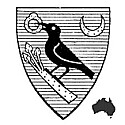View of the heads at the entrance to
Port Jackson New South Wales
1824 (Joseph Lycett)
Port Jackson New South Wales
1824 (Joseph Lycett)

North view of Sydney, New South Wales
1825 (Joseph Lycett)
1825 (Joseph Lycett)

Harbour view with road in foreground

Harbour view with road in foreground

Eliza Point, near Sydney New South Wales

View of Captain Piper's naval villa
at Eliza Point 1825 (Joseph Lycett)
at Eliza Point 1825 (Joseph Lycett)
![Sydney 1830 [view of the Domain and Mrs. Macquarie's Point]](http://farm4.static.flickr.com/3233/3028969345_a6fb3b93bb.jpg)
Sydney 1830 [view of the Domain and Mrs. Macquarie's Point]
![Sydney 1830 [Government House Stables from the Domain]](http://farm4.static.flickr.com/3239/3028969121_795d4d8e37.jpg)
Sydney 1830 [Government House Stables from the Domain]

View of Woolloomooloo with residence

The residence of Edward Riley, Esq.,
Wooloomooloo near Sydney, N.S.W.
1825 (Joseph Lycett)
Wooloomooloo near Sydney, N.S.W.
1825 (Joseph Lycett)
![Sydney 1830 [view of Woolloomooloo Bay and Garden Island]](http://farm4.static.flickr.com/3285/3028969229_0581de010f.jpg)
Sydney 1830 [view of Woolloomooloo Bay and Garden Island]

East View of Wooloomooloo near Sydney

Distant view of Sydney from the lighthouse
at South Head, New South Wales
1825 (Joseph Lycett)
at South Head, New South Wales
1825 (Joseph Lycett)
![Convict Barrack Sydney N.S. Wales [ca. 1820]](http://farm4.static.flickr.com/3284/3028967927_12e496dca6.jpg)
Convict Barrack Sydney N.S. Wales [ca. 1820]

East View of Ultimo in Sydney

Botany Bay, New South Wales 1825 (Joseph Lycett)

Mr Marsden's Mill N.S.Wales, near Parramatta

Parramatta, New South Wales 1825 (Joseph Lycett)

The residence of John McArthur Esqre.
near Parramatta, New South Wales
1825 (Joseph Lycett)
near Parramatta, New South Wales
1825 (Joseph Lycett)

View of George's River near Liverpool New South Wales

Liverpool, New South Wales 1825 (Joseph Lycett)
- *'Eliza Point' is now known as Point Piper and has the most expensive real estate in the country.
- *Parramatta is approx. 20km north west of the city centre
- *Liverpool is approx. 20km south west of the city centre
- *The Domain is still a large grassed area, flanked by the NSW Art Gallery and host to summer music festivals (just above the 'y' in Sydney on this map)
- *I live about 30km south of the city centre
- *Woolloomooloo (yes, really) is pronounced Wool-ah-m'-loo. Say it a bit faster. Perfect! (It's approx. below and slightly to the right of the 'y' in Sydney on this map)
The above images (most were spot-cleaned) were sourced from:
'Collection of views predominantly of Sydney, Liverpool, and the Sunda Straits, and portraits, ca 1807, 1829-1847, 1887' at the New South Wales State Library --- this album is basically a motley collection of prints, drawings and portraits put together in the 1940s by AW Fuller. There is mention in the background notes of the panorama at Leicester Square - I never did find the Sydney panorama for the entry from the other day - which is how I came to discover this album.
The balance of the images - by Joseph Lycett - are from a collection of ninety five aquatint engravings at the National Library of Australia. Transported to Australia as a convict, Joseph Lycett produced a series of engraved views of New South Wales and Tasmania, from 1824, that were published monthly in London. Eventually they were all published together under the title, 'Views of Australia'.
Afterthought: 'First Australians' is one of the best documentary series I've ever seen and can be viewed on the web. It screened on SBS last month. Highly recommended.
"First Australians chronicles the birth of contemporary Australia as never told before, from the perspective of its first people. First Australians explores what unfolds when the oldest living culture in the world is overrun by the world's greatest empire.
Over seven episodes, First Australians depicts the true stories of individuals - both black and white - caught in an epic drama of friendship, revenge, loss and victory in Australia's most transformative period of history.
The story begins in 1788 in Sydney, with the friendship between an Englishmen (Governor Phillip) and a warrior (Bennelong) and ends in 1993 with Koiki Mabo's legal challenge to the foundation of Australia. First Australians chronicles the collision of two worlds and the genesis of a new nation."




















































